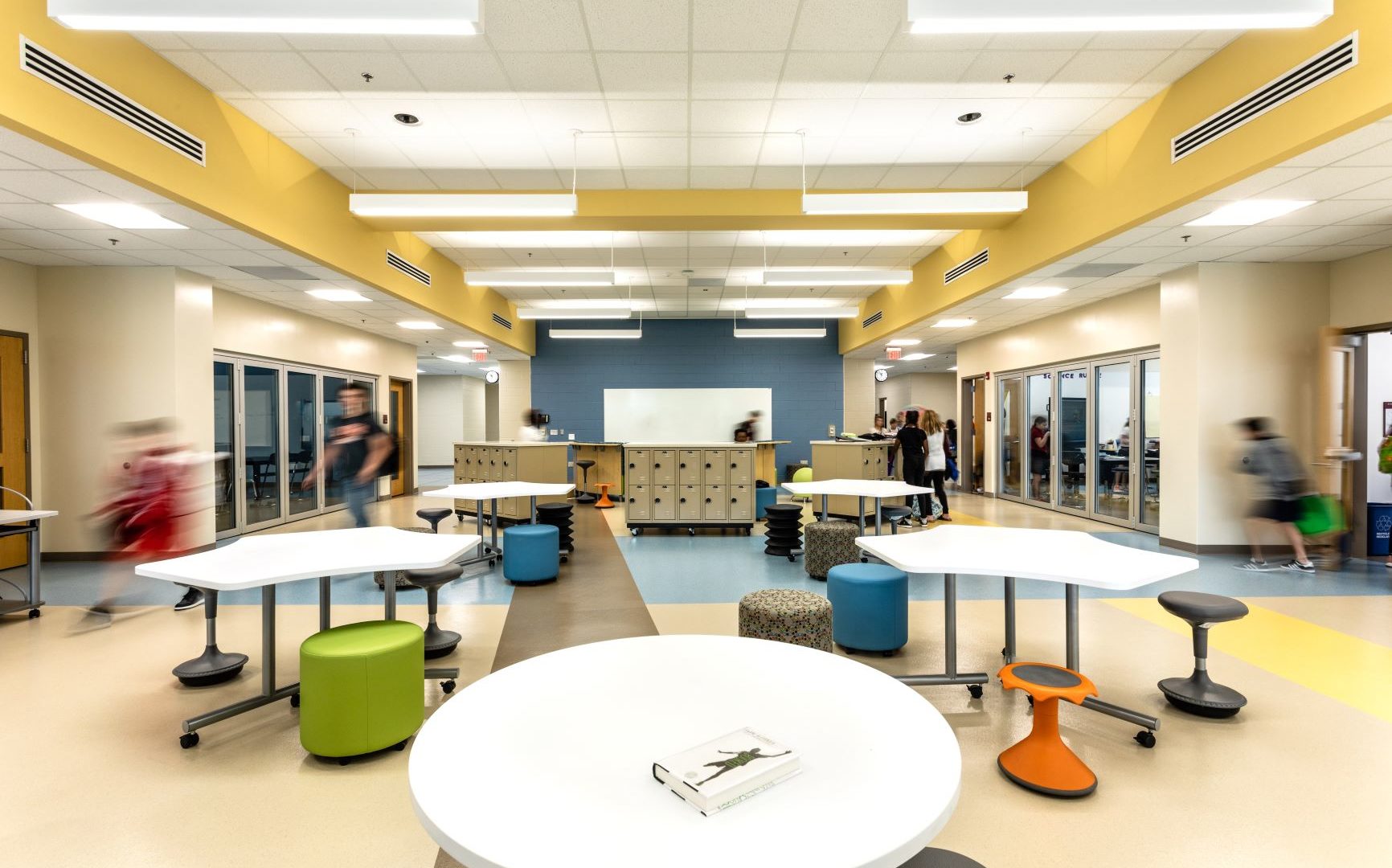By Steven Herr, AIA
For educators, students and families, 2020 has been a test of patience and persistence. Finishing the school year remotely, creating contingency plans for a new year and preparing facilities for in-person learning this fall has forced many of us to reflect on the state of our learning environments.
Even if it still seems unlikely at the moment, at some point in the future, aspects of “normal” school life will make a joyful reappearance. As school designers, we have tried throughout this involuntary pause to help however we can, and a lot of our time has involved listening, offering advice where appropriate and wondering what the education landscape will look like post-pandemic.
There have been several successes from these unexpected challenges that can be folded into how we teach and learn in the future.
Learning Everywhere
The pandemic has required educators to reconsider the movement and density of students and staff throughout the school day. Moving students into smaller groups has encouraged the expanded use of media centers, collaboration spaces and large gathering areas such as commons, cafeterias and outdoor courtyards.
The principal concept here is that learning can occur anywhere and that the education experience starts at the curbside of the school. In the future, the definition of what constitutes a classroom should be expanded to encourage teaching flexibility and scheduling alternatives.
Grouped Learning
Classroom and education design have evolved in recent years, as schools concentrated on developing the desired qualities of collaboration, communication, critical thinking, creativity, citizenship and character. The pandemic has thrown a spotlight on each of these in a unique way and has underlined the importance of considering the physical and virtual spaces we use while learning together.
As we have physically spread-out, we have tested the 6 Cs of education and are seeing how they might continue to give educators increased flexibility in the future. Some schools have created contact tracing plans that depend on keeping consistent groups of students together throughout the day. Taking advantage of extended learning spaces or learning hubs can maintain this group, free up capacity in regular classrooms and encourage deeper levels of collaboration.
Teaching Platforms
Many schools have been moving toward the increased use of digital content and remote teaching alternatives before this year, and the pandemic has accelerated this trend. The early feedback has been that teaching a class for in-person and remote students simultaneously is a challenge. It has been much easier to record the lesson in the classroom and have it available for remote students to view asynchronously.
For a limited school closure, such as a week of all-school quarantine, using a video conferencing tool has worked well to keep students connected to their teachers. Moving forward, designing for classrooms should take into account these various teaching platforms.
Design Considerations
Classroom flexibility will continue to be at the forefront of education design. Creating spaces that are able to quickly adapt over time is worth a series of discussions and visioning sessions between educators, students and designers to get the right mix for each learning community.
Careful consideration should be given to select classroom equipment that can be easily relocated within the classroom or into adjoining spaces. Mobile whiteboards that were used for personal protection during the pandemic can be repositioned or relocated, while paneled guards and screens that were used at desks might be repurposed as vision screens during testing.
The hand sanitizing stations and floor markings should remain; the benefits they provide and the habits they have instilled should be permanent. Over time, floor decals might double as learning tools, or become integrated with the pattern and design of the floor finish.
Desk and chairs should be light yet durable so they can be rearranged and regrouped throughout the school day. As mentioned previously, take advantage of extended learning spaces and large common areas as much as possible. With portable equipment and mobile classroom furnishings, these areas can quickly shift based on programmatic needs.
Teachers and administration should weigh the importance of fixed storage and non-essential equipment that was removed from the classroom during the pandemic to increase floor space for distancing. We have heard that many schools have encouraged teachers to reconsider what is absolutely necessary for everyday instruction. Fewer surfaces are easier to sanitize, and the extra daily space in classrooms increases overall classroom flexibility.
Creating Community
A significant impact of the pandemic was the loss of in-person gatherings. We are social beings who require personal interaction and shared experiences to grow and thrive. Classroom environments provide safe spaces for one-to-one teaching and for learning and working in smaller groups.
However, outside your traditional classrooms, does your building have a “heart space” or crossroads where your entire school can come together? Is there a mixing space that encourages creative collisions and unexpected delight? Central gathering spaces serve to tie the entire school building together and, moving forward, this type of space may be more important than ever.
This is a moment to carefully examine design for classroom and learning environments. Trends in education have accelerated in some areas, while others seem less urgent at the moment. However, many principles in teaching and learning are timeless, and with those in mind we can effectively plan for the future.
Steven Herr, AIA, is the director of design for Fanning Howey, an architecture, interior design and engineering firm specializing in learning environments, www.fhai.com.









